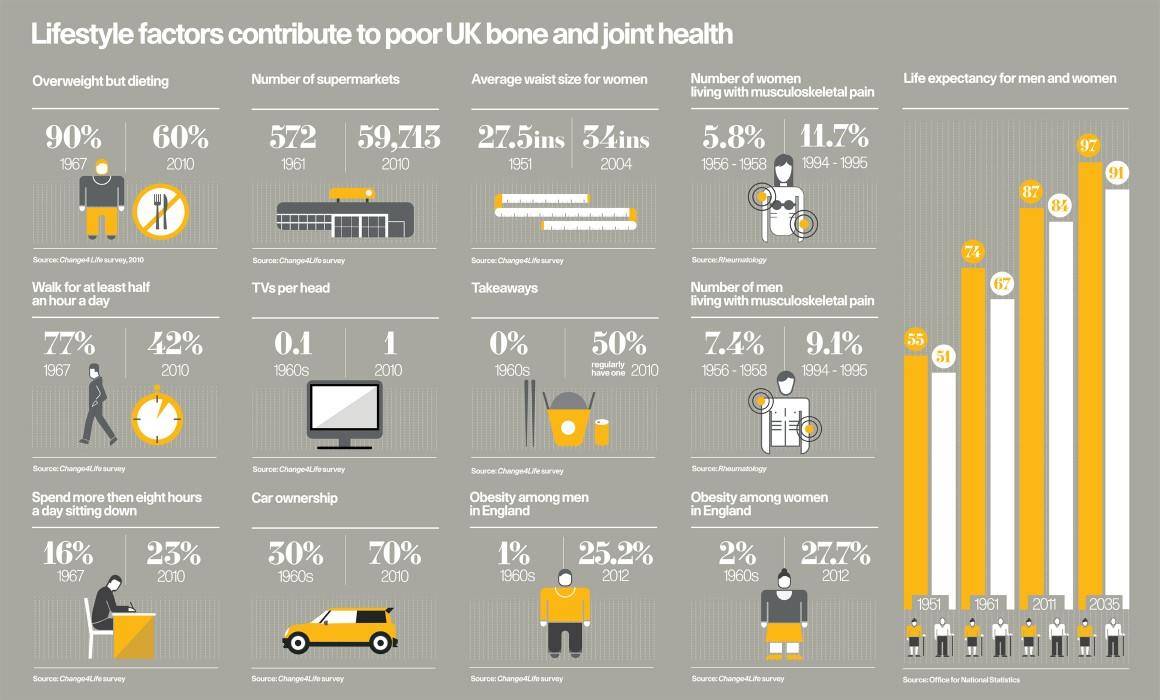It is said that convenience comes at a cost. This seems especially true when looking at this infographic.
The dream of our forefathers might have been that future generations would not have to do such backbreaking work as they did. And this has come to pass. Most of us now have the luxury of sitting as we work, and using just maybe our brains and our hands, rather than every fiber of our being, plowing a field for instance. In fact more than 23% of us sit for more than 8 hours per day, which 100 years ago might’ve been considered a luxury fit for only kings and queens.
And there was a time when walking was a necessity for the masses to get somewhere. No doubt the ancients fantasized about contraptions that would get us to places in a fraction of the time with much less energy.
So the car was invented…and as you can see individual car ownership has risen from 30% to 70% since the 1960s. Meaning 40% less people have to walk anywhere.
The graph below indicates that due to cars becoming a ‘necessity’ to many, we now walk about half as much as people in 1967.
In the 1960s, TVs were 10 times less common in households. So more people back then either walked to the cinema, or found other ways to entertain themselves – that undoubtedly burned up more calories than watching TV.
Since 1961 the number of supermarkets has gone through the roof and we now have 100 times as many of them if you can believe it! On one hand that is a testimony to humans ability to invent, expand and increase size, stature and organization of our operations. But it also means that food is 100 times closer at hand, in greater supply, and we barely have to lift a finger to get in on the table, when compared to previous times.
But what has been the cost of our modern conveniences and inventions? Unfortunately it appears to be health, as you can see that obesity and musculoskeletal pain (along with many more issues) has risen proportionately to the number of luxuries we’ve afforded ourselves.
If health is the real wealth, it is a high cost we may be paying.
References
1. http://raconteur.net/infographics/lifestyle-factors-impact-on-uk-bone-and-joint-health






Article Comments